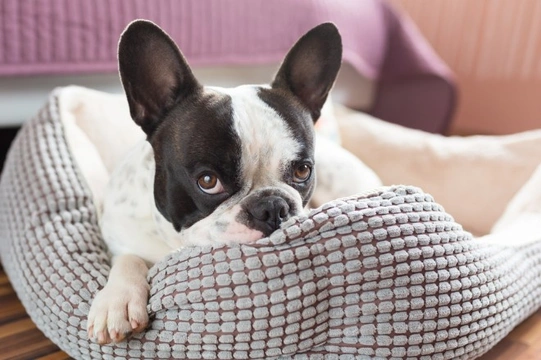
Dogs and den behaviour
It is often said that dogs are den animals, which means that they like to make themselves a cosy, safe nest or den and use it as their permanent home, retreat and safe space. Within the home, this can take the form or a crate or specific bed area that your dog can call their own, and which is their territory and home space for them to sleep in and retreat to. This behaviour is ingrained within the dog, and in the wild, dogs tend to find a safe, dry place within the range of their territory that they return to time and time again unless this becomes compromised, when they move on. But are dogs actually den animals in reality? The answer is not so straightforward!
What is a den?
A den in the animal sense is a hole or burrow in the ground that provides protection from the elements, and also a reasonable chance of hiding from predators when the animal is vulnerable, such as when they are asleep or raising their young. True den animals are animals such as foxes, rabbits and moles, who build tunnels and burrows under the ground, something that dogs do not do.
Within the range of this definition, dogs are not den animals, yet they nevertheless display an instinctive desire to snuggle up and hide in small, safe spaces that are warm and reasonably enclosed. In the wild, dogs are more likely to make their retreat in a cave or in the lee of a tree rather than in a burrow, and the same is true for wild wolf populations, the ancestor of the modern dog.
Maternal dens
When a dam is pregnant and preparing for the arrival of her litter, finding a safe place to birth and raise her puppies is her main priority. A maternal den is such a place, and is where the dam in the wild will choose to make her safe space, protected from bad weather and out of sight of passers-by and potential predators. This is vitally important during the first few weeks of the puppies lives when they are extremely vulnerable, being both blind and deaf and unable to move far on their own.
All dogs both in the wild and in the home will utilise a maternal den when they are about to give birth and when the pups are young, but after this time, the pack will usually move on, either using the den less frequently or abandoning it entirely.
When the pups reach around eight weeks old and are well on the way to being fully weaned and becoming independent, the den will become less important, as the dam seeks to move the pups out into the wider world and educate them in the basics of being a dog, socialisation, and how to fend for themselves.
If you have ever cared for a pregnant dam, you will likely have already seen this nesting behaviour in practice as your dam searches the home for a safe and comfortable place to deliver and raise her litter, which may not be anywhere near her usual bed or resting place.
Dens within the home
While a true den is basically a burrow or other area that the dog chooses in the wild and furnishes and alters to suit their own purposes, it is important for your dog’s sense of security, peace of mind and general wellbeing to provide an equivalent of a den within the home.
This will take the form of your dog’s designated bed area or crate, and you may find that your dog does not automatically gravitate to the area that you would choose for them, instead finding a spot of their own that they prefer. If your dog makes their den under a bed or chair, or somewhere else other than where you place their bed out of choice, you might need to consider moving their bed to accommodate for their preferences where possible.
One of the most popular places to set up a den for your dog is under the stairs, as this environment is likely to be both convenient to the owner in terms of being out of the way and using an otherwise free space, while also appealing to the dog. The space under the stairs is generally enclosed on three sides and above, while still allowing the dog to be able to see out and come and go freely.
This is important for the dog, as having walls on three sides plus a low ceiling generates a sense of security in the dog, as they only have one side from which they can be approached, and they can still see what is going on and who is around.
Crates and indoor kennels too can fulfil this purpose, but putting a blanket or other cover over the top of the crate may help your dog to accept it and view it as a safe space, as this essentially forms walls that can create an added sense of security and restfulness in your dog.



